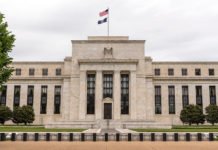As discussed last week tomorrow’s RBA Board meeting should be used to abandon the specific guidance that rates are on hold until 2024. Associated with that would be to abandon the Yield Curve Control Policy. This guidance was adopted at a time of an extreme emergency which has now passed.
The Reserve Bank Board meets tomorrow for what is becoming a very important meeting.
Last week we confirmed our view that the cash rate is expected to remain on hold until the February Board meeting in 2023.
But tomorrow’s meeting will be about the Board’s guidance and any implications for unconventional monetary policy.
We want to see a significant revision to the Bank’s economic forecasts.
Last week we noted our expectation that the Bank will revise up its forecast for core inflation (Trimmed Mean) from the current 1.75% in 2022 to 2.5%.
That will still be below Westpac’s forecast of 2.8% but will also lay the foundation for a further lift to 2.75% by the end of 2023 (current forecast is 2.25%, an increase of 0.5% over 2023)
The Bank’s current forecast for wages growth by end 2022 is 2.5% building to 2.75% by end 2023.
As noted, last week Westpac’s current forecast is 2.75% by end 2022 and it is reasonable that the Bank will lift its wages forecast to near the Westpac forecast.
For the unemployment rate the Bank is forecasting 4.25% by end 2022; Westpac is forecasting 3.8%. It is also reasonable that the Bank will lower its unemployment forecast to nearer 4.0% – the level that we assess is consistent with full employment.
An important factor in the likely lowering of the unemployment rate forecast and the faster increases in wages and prices growth is likely to be a significant lift in the forecast economic growth rate for 2022 from the Bank’s current 4.25% to around 6% (Westpac’s current forecast is 7.4%).
There has been a very important change in RBA policy that will be the defining condition for the upcoming cycle.
That change is to not begin the rate hike cycle until the core inflation rate has reached 2.5% and looks to be holding there on a sustainable basis.
It will also be necessary to have achieved full employment with associated clear evidence that wage inflation is materially higher than currently – a 3% target has been noted in various speeches from RBA executives.
For these reasons we can see, based on their current forecasts, why the Governor has consistently signalled that the necessary conditions for the rate hike will not be reached until 2024.
But if the Bank adopts the more upbeat outlook that aligns fairly closely with Westpac’s forecasts, then the 2024 condition would not be consistent with the revised forecasts.
As discussed last week, we expect that the appropriate guidance that will be delivered in the Governor’s Statement following the Board meeting tomorrow will be to exclude the 2024 guidance.
If that is done it is unlikely that the unconventional approach of setting a date would be retained.
As I noted last week.” Personally, I would strongly applaud acceptance that the Governor now expects that the conditions necessary to begin the move away from the emergency policy settings will be achieved earlier than previously expected. The strong existing guidance, particularly during 2020, was key to underpinning confidence in the RBA’s commitment to doing everything reasonably within its powers to protect the Australian economy.”
But setting specific dates for policy changes has not been a standard policy for the RBA in previous cycles.
Now that the emergency has passed; the economy is reopening; and there are early signs that the Board may be closer to achieving its objectives the time is right to move away from such a rigid policy approach.
Of course, if the “2024 guidance” is removed then the complementary policy – Yield Curve Control- would also have to be removed.
Indeed, if the “2024” guidance is maintained then the Bank is likely to have to persevere with the YCC policy to maintain its credibility.
With probably only around $10 billion of April 2024 bonds not already in the hands of the RBA, persevering with YCT would not be a hugely expensive exercise but clearly disruptive for markets, given recent developments.
Nominating an earlier period for the lifting of the cash rate and an associated YCT target for a shorter bond would also be highly unlikely.
As discussed, the naming of a lift off date was part of a set of emergency measures that does not need to be perpetuated given the current normalisation of economic conditions and the positive economic outlook.
Conclusion
The emergency policy measures of nominating a date for the beginning of the rate hike cycle and the complementary Yield Curve Control policy has been important for strengthening expectations of a long period of low rates at a time when the economy was facing a major crisis.
Now that those uncertainties have passed the time is right to move back to a standard approach of not setting specific dates for the policy outlook or needing to emphasise the strength of that commitment with the YCCT policy.













